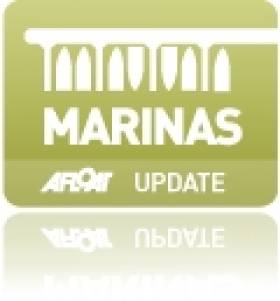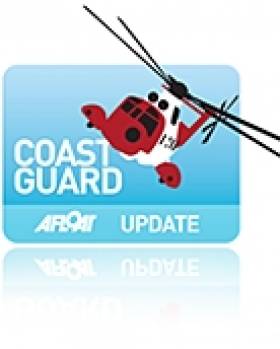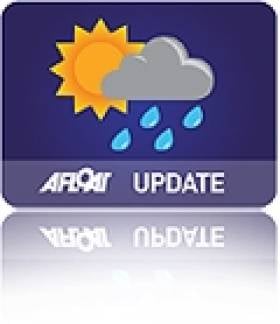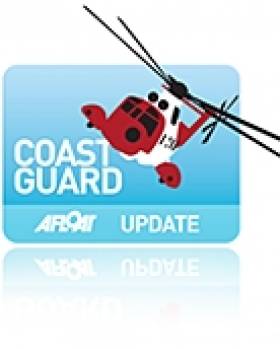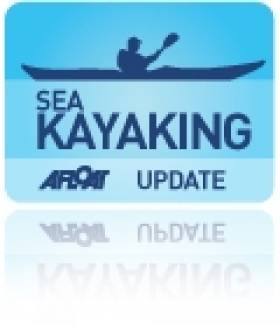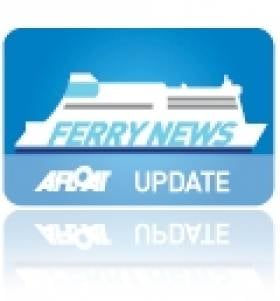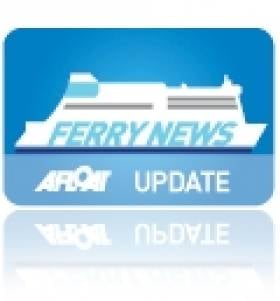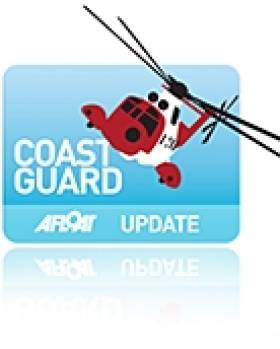Displaying items by tag: Holyhead
#MARINA NEWS - A new €124 million marina development in Holyhead has been given the go-ahead by Anglesey councillors, as the North Wales Chronicle reports.
The residential and retail development by Conygar Stenaline will include a 500-berth marina, restaurants, a hotel and more than 320 waterfront homes, and could create up to 700 jobs in the port town, which is one of Wales and England's principal logistical and passenger ferry links to Ireland.
A report to Anglesey Council's planning committee stated that the new scheme's "contribution to the local economy is likely to be significant."
However the development plans have faces criticism locally. Campaigners staged a protest against the project upon the news this week, while Holyhead councillor told the Chronicle: "We do not have to give our own heritage to private developers.
"Our beaches are our family silver and our heritage," he said.
The final decision on the development will be made by the Welsh Government as the plans depart from the council's adopted development proposals.
The North Wales Chronicle has more on the story HERE.
Work Begins to Eliminate Sea Squirts in North Wales
#MARINE WILDLIFE - Work on exterminating sea squirts at a marina in north Wales has begun.
The £250,000 (€301,000) project by the Countryside Council for Wales involves attaching giant bags to the subsurface structures around the marina in Holyhead, which is hoped will stop the clean flow of water to the sea squirts, causing them to suffocate and die.
Marine biologist Rohan Holt, who is managing the project, said: “If we successfully eradicate the sea squirt, we will work hard to make sure that it does not recolonise.
"This will mean careful monitoring in Holyhead marina and other marinas and popular mooring areas throughout Wales to check that it hasn’t reappeared."
The sea creature threatens shellfish by spreading like a blanket across the seabed and other surfaces.
As previously reported on Afloat.ie, colonies of the invasive Japanese sea squirt are posing a throat to mussel and scallop bed in the Menai Strait between Anglesey and the mainland.
Boats from Ireland have been blamed for carrying the invasive pest into Holyhead.
The Daily Post has more on the story HERE.
Efforts Continue to Locate Missing Fisherman on the Irish Sea
#MAN OVERBOARD – At 02.29 am, Holyhead coastguard received a call from a fishing vessel to report one of their crew missing, he had been last seen onboard 1.2 miles west of South Stack on the Irish Sea.
A mayday relay was broadcast by Holyhead Coastguard to alert other vessels in the area and RNLI lifeboats were requested to launch from Holyhead, Porthdinllaen, and Trearddur. A rescue helicopter was also scrambled from RAF Valley. Other fishing vessels in the area are also assisting in the search.
The fishing vessel had departed Holyhead at 11.25 pm and the crewman was last seen at 00.45 am, the vessel alerted Holyhead after finding the man missing at 02.29 am.
Holyhead Coastguard has coordinated the fishing vessels, lifeboats and helicopter in a search in Caernarfon Bay covering an area of fifty square miles.
Jim Green, Watch Manager, Holyhead Coastguard said:
Every effort has been made to try and locate this missing crewman.
The weather in the area is North Westerly F4 with a calm sea and slight swell, the water temperature is eight degrees.
The Coastguard say he was not wearing a lifejacket.
Ireland Battered by Storm-Force Winds
#WEATHER - Ireland has been warned to brace for further strong winds set to sweep across the country today (4 January),
The Irish Times reports. Winds reaching near hurricane speeds have affected coastal communities in the north and northwest, peaking at a remarkable 168km/h in Donegal.
Thousands of euro worth of damage was caused when the roofs of traditional thatched cottages at Cruit Island in west Donegal were blown away.
But the west and east have also been hard hit, with storm-force gales exceeding 100km/h uprooting trees and disrupting electricity supply.
As previously reported on Afloat.ie, ferry services on the east coast have been severely affected. Irish Ferries cancelled two fast ferries from Dublin to Holyhead yesterday, and today's early Jonathan Swift sailings between Dublin and Holyhead were also cancelled.
Met Éireann expects wind speeds to be lower today, but could still reach 90-120km/h in some areas.
The Irish Times has much more on the story HERE.
Unconscious Man Rescued from Incoming Tide
He had been found lying in a muddy ditch in 10 inches of water by a man and his dog. Jumping in to hold his head above the rising water his rescuer managed to attract the attention of some builders working nearby. They called the ambulance, who alerted Holyhead Coastguard.
The RAF Rescue helicopter from Valley was sent to the scene with Criccieth Coastguard Rescue Team and paramedics. The man was rescued from the ditch and taken to hospital by helicopter.
Holyhead Coastguard Watch Manager Barry Priddis said:
"This gentleman was really lucky to be found as the tide was coming in and he would soon have been beneath the water. If I was him I'd buy a lottery ticket tonight."
Welsh Kayaker Sets New Irish Sea Crossing Record
According to Canoe & Kayak, last Saturday 2 October Anglesey man John Willacy crossed from Soldier's Point in Holyhead to Howth in Dublin - a distance of 55.8 nautical miles - in 11 hours 19 minutes and 59 seconds.
It's not the first open sea kayaking record set by Willacy, who last year broke the record for circumnavigation of the Isle of Man in 12 hours 38 minutes.
Irish Sea Cross Channel Fast-Ferry Services On Declining Trend
The third service between Belfast-Stranraer is in the hands of rivals Stena Line which maintain the HSS Stena Voyager (1996/19,638 grt) on sailings but only to around mid-November. She will be replaced by conventional sister-ships which will be introduced on the North Channel's newest port when services switch from Stranraer to a new terminal close to Cairnryan.
Finally the fourth fast-ferry is Irish Ferries marketed 'Dublin Swift' service which runs on the Dublin-Holyhead route served by Jonathan Swift (1999/5,989 grt). The craft built by Austal in Fremantle, operates alongside the conventional cruise-ferry Ulysses.
Stena Line's decision to terminate HSS Stena Explorer sailings between Dun Laoghaire-Holyhead this day last week follows fast-ferry Stena Lynx III's end-of-season Rosslare-Fishguard sailings earlier this month.
From next year, Dun Laoghaire-Holyhead sailings are to be seasonal-only and according to Stena Line they hope to resume fast-ferry sailings in April or May though no exact date has been set. Unlike the central corridor route which was entirely dependent on HSS operations, the Rosslare-Fishguard route remains operating year-round with the conventional ferry Stena Europe.
As a result of the discontinued fast-ferries, the HSS Stena Explorer is now spending a lay-up period in the Welsh port for the winter. The smaller Stena Lynx III is also 'wintering' but in on the opposite side of the Irish Sea in Dun Laoghaire, where the vessel has done so in previous years.
The lay-up of both fast-ferries in Dun Laoghaire and Holyhead is ironic considering that neither ports' are connected by the very craft that used to share sailing rosters in recent years. In addition the wintering of these catamaran craft is the first time that this has occurred since the pioneering Stena Sea Lynx fast-ferry launched such sailings in 1993.
This first 'Lynx' provided seasonal sailings on the route with conventional car-ferry Stena Hibernia, the former St. Columba, custom-built in 1977 for Sealink /British Rail. She was given a second name under Stena ownership, the Stena Adventurer and remained on the 57 nautical-mile route until replaced in 1996 by the year-round operated HSS Stena Explorer.
Apart from cross-channel fast-ferry services, the Isle of Man is served by the Isle of Man Steam Packet Co. Ltd's routes linking the islands capital Douglas with Belfast, Dublin, Heysham and Liverpool (Birkenhead) in the winter. These routes include seasonal services which are operated by a combination of conventional tonnage using Ben-My-Chree and fast-ferry Manannan (1998/5,089grt), a former US Navy vessel, to read more click HERE. For sailing schedules, vessel type deployed on route and for fares click HERE.
- Dublin Port
- Irish Ferries
- Dun Laoghaire
- Stena Europe
- Holyhead
- P&O Ferries
- Belfast Harbour
- Stena Line
- Larne
- Ports and Shipping News
- Ulysses
- P&O (Irish Sea)
- Cairnryan
- Ferry news
- Stena Explorer
- Stena Express
- FastFerries
- Cruiseferry
- Manannan
- Isle of Man Steam Packet Co.
- Stena Voyager
- Belast Port
- Isle of Man ferry services
- P&O Express
- Irish Sea fastferries
- Stena 'Lynx'
- BenMyChree
- Dublin Swift
- Stena Sea Lynx
Expected Strong Winds Lead to Ferry Cancellations
Storm force winds are expected across the country later on this evening and into tomorrow.
Met Éireann has warned of gale to storm force winds tonight with speeds of up to 130km/h, strongest in the northwest.
Extremely high waves are expected on southwest, west and north coasts.
Irish Ferries has cancelled a number of its Swift sailings between Dublin and Holyhead because of forecasts for the Irish Sea.
P&O's scheduled sailings between Larne and Cairnryan this afternoon have been cancelled, as have this evening's sailings between Larne and Troon.
Dublin Is Fly-Cruise Hub as 'Journey' Heads for Iberian Sun
Tonight's departure is for Holyhead, where the call to Anglesey also covers tours of Snowdonia, the impressive castles of Conwy, Caernarvon and Harlech and a stop to Bodnant. Following the Welsh call she is to visit Cobh. Other calls are to Bordeaux (overnight), Bibao, Gijon,Vigo and the final port of call is Lisbon on 7 September where passengers will remain in their cabins for an overnight stay. The next day there is a scheduled tour of the Gulbenkian Museum, the Jeronimos Monastery and Sintra.
On one-day the ship will spend the entire day at sea which will enable passengers to indulge further of the facilities such as the casino and entertainment in the theatre, for more click HERE. Fares for the Irish passengers of the 10-day cruise/11-day holiday started at €2,062 per person (cruise-only) based on the lowest grade twin cabin. After completion of the cruise in Lisbon they will take a flight to return to Dublin.
Azamara Journey formed part of the eight-strong series commissioned for Renaissance Cruises which collapsed a decade ago. They were built by Chantiers de l'Atlantique in St.Nazaire and were uninspiringly named as R One, R Two etc with the R Six now the re-named Azamara Journey.
As August and the high-season draws to a close that doesn't' stop the cruiseships calling as over twenty more are due in Dublin before the season closes. In total the port this year has handled some 90 cruiseships and 160,000 passengers. A further 65 callers so far are scheduled for 2012.
- Cobh
- Dublin Port
- Cruise Liners
- Princess Cruises
- Holyhead
- Anglesey
- Ports and Shipping
- Cobh Cruise Terminal
- Port of Dublin
- Cruise Liner news
- Trinity College
- Cruise ships
- Ocean Princess
- Azamara Club Cruises
- Azamara Journey
- Renaissance Cruises
- R6
- Powerscourt Gardens
- Gulbenkian Mseum
- Lisbon
- Western European Cruises
- Dublin cruise terminal
- Welsh cruise calls
- Welsh castles
- R Six
- Chantiers de l'Atlantique
Reprieve for Holyhead Coastguard a 'Victory for People Power'
A former mayor of Holyhead has sung the praises of Holyhead's coastguard station to Afloat.ie.
Commenting on our recent report on plans to close Liverpool's coastguard station, Cllr KR Roberts said it was "a victory for people power" that Holyhead in north Wales joins Bangor in Northern Ireland among those stations reprieved under revised proposals for the streamlining of Britain's coastguard network.
"Holyhead Coastguard covers a vast area of the Irish Sea in close proximity to the Irish coast, where it joins forces with their Irish Coast Guard colleagues to provide a service of maritime safety to both commercial vessels and leisure craft alike," said Cllr Roberts.
"Holyhead Coastguard also provide maritime safety cover to over 300 miles of Welsh coastline that welcomes a vast variety of leisure craft from Ireland.
"As a past mayor and local councillor in Holyhead I am proud to promote the long traditions of maritime connections between Wales and Ireland. However I am sorry to see the loss of any coastguard station - in this case Liverpool Coastguard, which provides maritime safety cover to the northwest coast of England and the Scottish borders around the Solway Firth."
Cllr Roberts added that these areas would be taken over by Holyhead "with resilient support from Belfast and Milford Haven Coastguards".


























